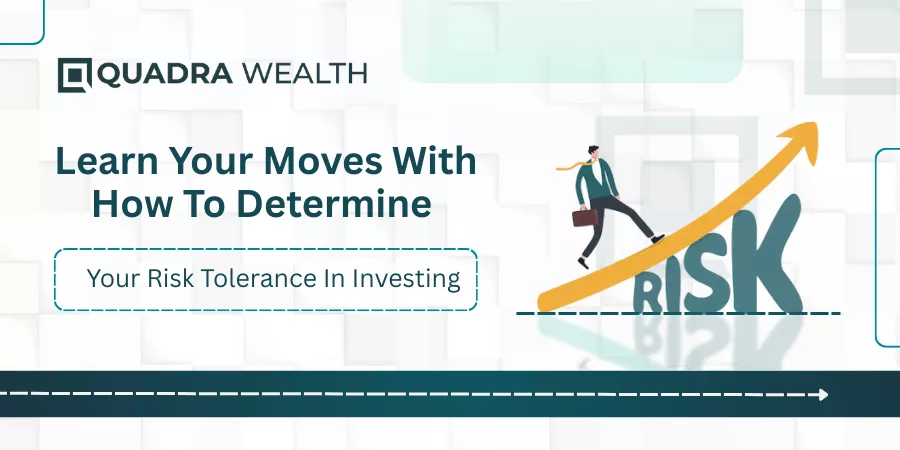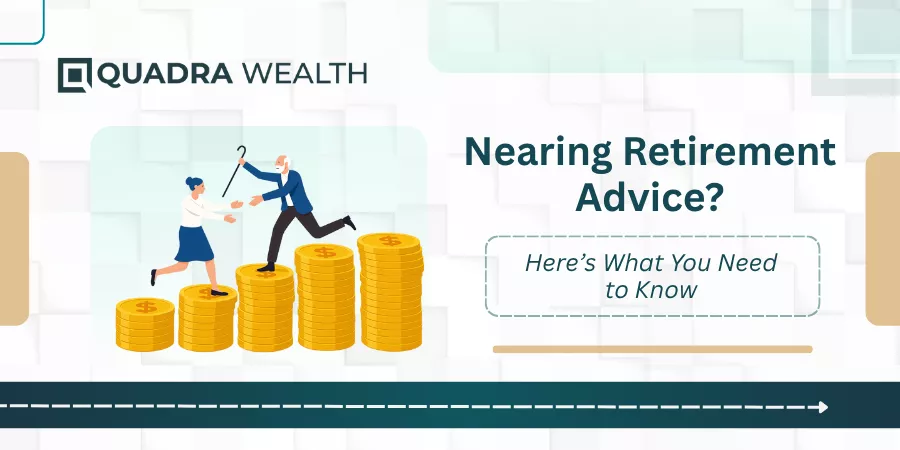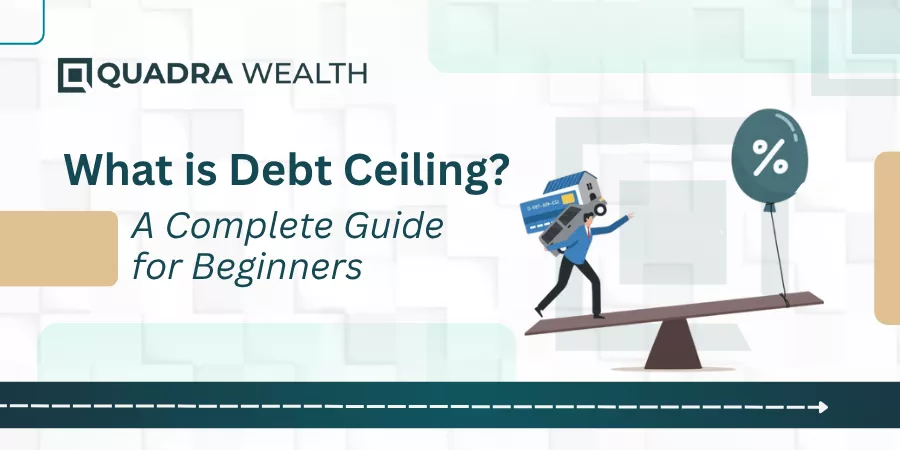As a newbie investor who wants to steer ahead in your financial direction, this is the penultimate step that you or your investment advisor can take. You must know the level of risks you can undertake under your investment belt.
This is because the trading instruments like stocks, bonds, shares, commodities, or currencies cannot hit winning stakes all the time. The prices of stocks/ commodities/ currencies keep rising or falling based on the market volatility you face during the day. Therefore, when you want to take your money from the investment pool, you determine your risk-taking capacity, which is called risk tolerance in the world of finances/ investments.
On this parlance, let us discover different factors on ‘How To Determine Your Risk Tolerance In Investing’ while also giving you a touch-down into the basics or fundamentals underlying the same. Helping you get started here:
What is meant by Risk Tolerance in the Financial World- Meaning and Conceptualization Explained
Risk Tolerance is known as the amount of risk that you can take under your financial belt. For the amount of capital investment that you make, you must be ready to take a certain number of risks that may shake the money you have deposited in your capital vault.
Volatile markets, credit concerns, and economic disruptions may cause investments to go down. The net investment value may be less than what was anticipated, and this is the risk you must take on your belt.
Therefore, risk tolerance refers to the amount of risk you can take within your financial spectrum. Your investment advisor assesses your risk tolerance and then advises how much you can invest in every investment portfolio.
What are the different factors that determine the risk tolerance of your investment portfolio?
These are the different factors that determine the risk tolerance of your investment portfolio. Helping you through a rundown of the same:
Consider your time horizon
You must consider the time horizon of your investment portfolios and then decide what is investment option you would consider taking up.
- Do you want your investment plan to cover 10 years? Then it is a short-term or medium-term financial goal that you are probably looking at. It can be to procure your car or your dream home.
- Does your investment plan cover a time horizon of 15 plus or 20 years? Then, you might be looking at long-term investment solutions like Estate Planning or Retirement planning.
Therefore, the time horizon is an important factor that helps you choose investment portfolios with the optimal risk tolerance ratio added to it.
Determining the amount of money you are ready to invest
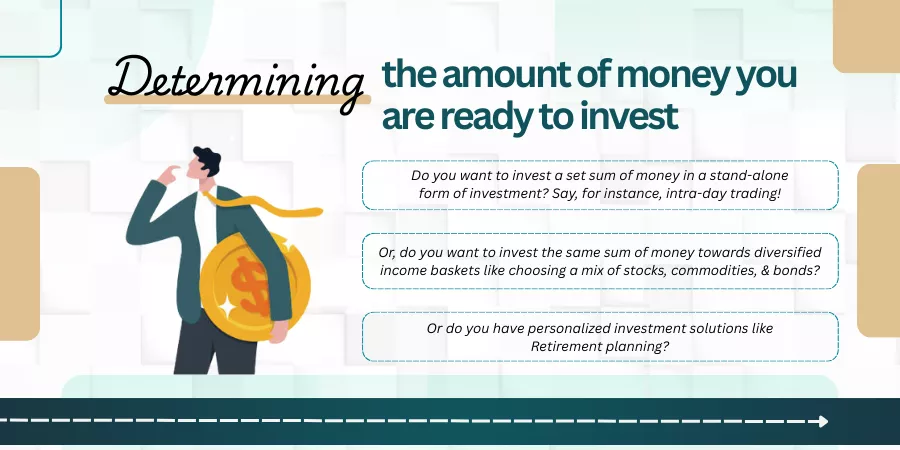
This is the next predominant step you take to make sure your financial planning is heading in the right direction. You must create a sheet in which you disclose the amount of money you are planning to invest via your given portfolio.
These are the checklist questions for you to ask:
- Do you want to invest a set sum of money in a stand-alone form of investment? Say, for instance, intra-day trading!
- Or, do you want to invest the same sum of money towards diversified income baskets like choosing a mix of stocks, commodities, and bonds?
- Or do you have personalized investment solutions like Retirement planning?
You can allocate money into each of the above or across one of the above!
Analyzing the financial situation you have on hand
These are the two types of financial situations you have in mind. Your risk tolerance can be determined accordingly. Let us have a brief rundown of each of the above:
A- Financial stability
When you have higher earnings and lower debts, your risk tolerance is higher. This means you can take higher risks within your financial appetite.
B- Living on a paycheck-to-paycheck model
For most of you who are living on a paycheck-to-paycheck model, your expenses are usually on the rise with a higher amount of debt as well. This means you have little tolerance to lose your investment sum in case of market risks or case of other economic downturns. The risk tolerance for you is then lower.
Determining your risk tolerances based on your investment goals
Your investment advisor would categorize you into a higher risk tolerance investor or a lower risk tolerance investor based on the investment goals you have in mind:
A- Aggressive Income growth goals
When you have aggressive income goals to achieve, you can give leeway for aggressive investment strategies like share betting, hedging with financial assets, dealing with futures, or taking private equity shares into your financial custody.
This way, you must be more adaptable to take up higher market risks to deal with these types of investment portfolios, as they are not traditionally designed for you like bonds or fixed-income securities. Here, your risk tolerances must be on the higher edge.
B- Looking for capital preservation over RoI
Traditional retail investors may belong to the old school of thought when it comes to choosing investments for their portfolios. These investors may be retirees, pensioners, or senior citizens. They do not want their capital corpus to take market shocks, and they can allow their portfolios to just earn modest returns on their investments. Therefore, if capital preservation is a more preferred one over earning returns on your investment portfolios, then you would belong to a lower risk tolerance investor.
Can you cope with emotional comfort with risk?
When you can cope with your emotions with buying or selling risks in the market, then you are supposed to be an investor of higher tolerance. Let us have the discussion bifurcated into two scenarios:
A- Price Drop
When the prices of stocks drop by 20%, you want to sell them immediately, it is supposed to be an emotionally triggered decision. We call it ‘panic and sell’. Here, your risk tolerance is said to be on the lower edge as you fear prices falling still further.
B- Looking at it as a buying opportunity
When the prices of stocks fall and you look at is a buying opportunity to sell later, then you are an investor with a higher level of risk tolerance.
Using tools to assess your level of risk tolerance
When you cannot personally assess your risk tolerance ratios, then you can approach reputable brokerage firms or fill out their questionnaires online. These include firms like:
- Vanguard
- Fidelity
- MorningStar and
- Schwab
The Bottom Line
The different ways of acquiring a realistic quantum in deciding your level of risk tolerance have been discussed in this forum. You may not be able to self-assess your risk tolerance ratios. Here, the better idea would be to approach an investment advisor to help you decide the right investment plans after checking your risk tolerance levels. What are your thoughts on this? Do let us know in the comments below!
Frequently Asked Questions or FAQs
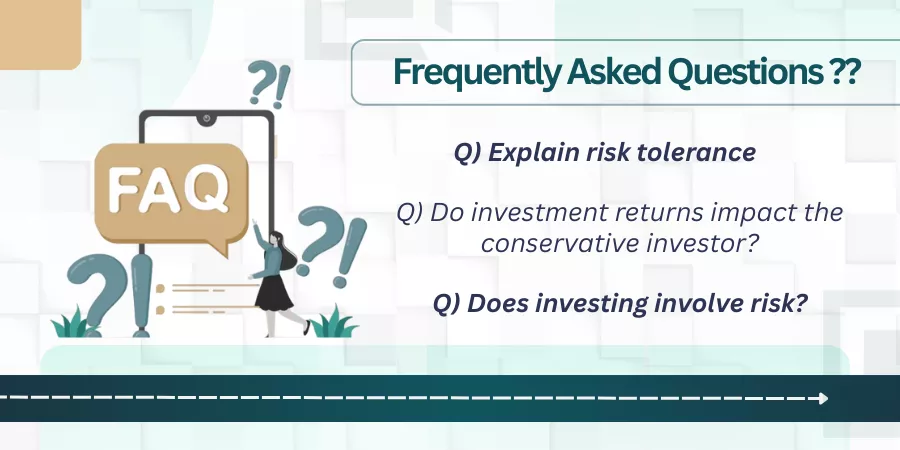
Explain risk tolerance
Answer: The risk level of every individual investor is measured. This is in terms of investment risks or losses he can take up under his financial belt. The investment decisions are taken up accordingly. This explains the concept of how risk tolerance works.
Does investing involve risk?
Answer: Yes, different investment tools involve varying degrees of risk. For instance, bonds are impacted by changing interest rates. Stocks are impacted by falling or rising market conditions. The higher the risk, the better the potential you have to win stakes. The lower the risk, in terms of your financial risk, the lower the returns you would make.
Do investment returns impact the conservative investor?
The asset allocation for a conservative investor comprises bonds and capital protected equities to the able to take profits and redeem their capital once the portfolio is up for redemption. The additional risk you take to improve your liquidity or net worth makes you a higher risk-tolerance investor. Inform your investing decisions to your investment assessment officer or a financial planner before you think of increasing your cash reserves or buying more growth stocks to boost your portfolio.

